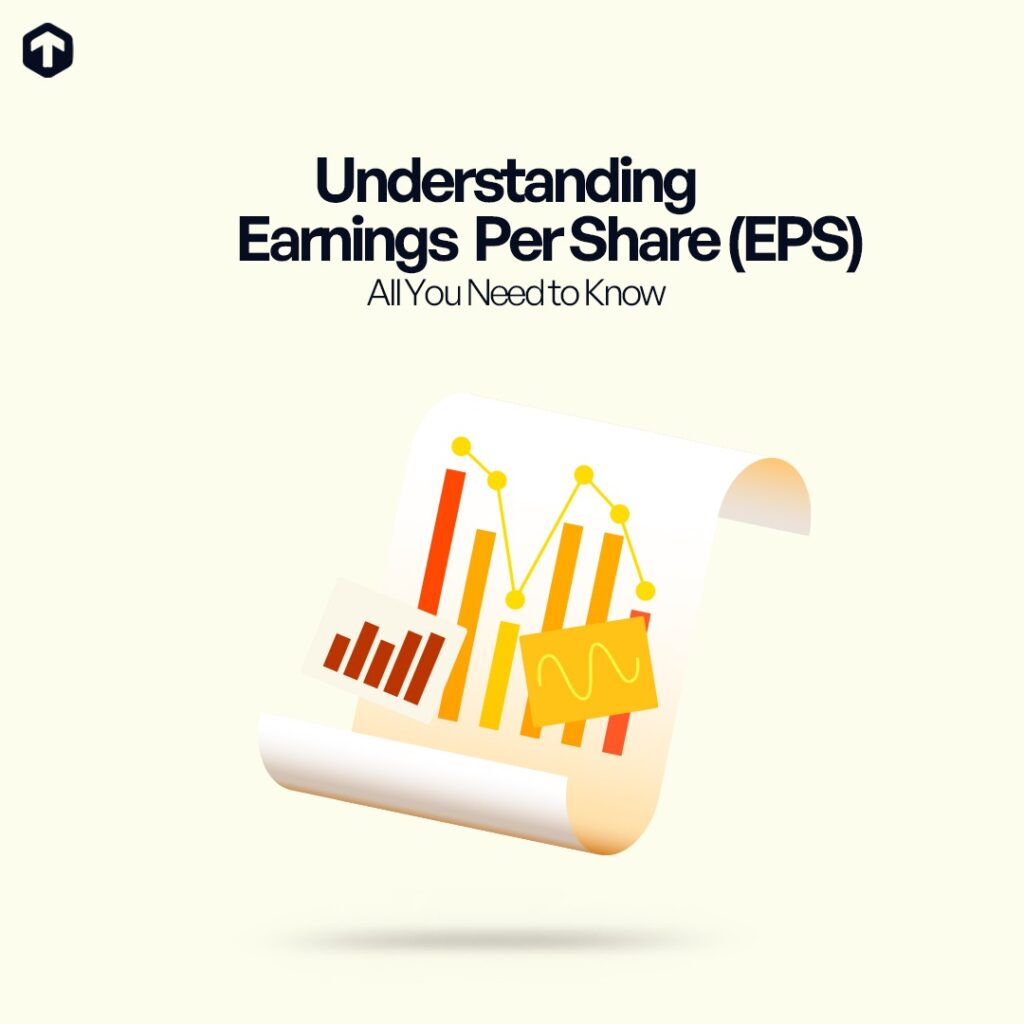Have you ever wondered how experts evaluate if a company is doing well or not?
One important metric you can use as an investor is called Earnings Per Share (EPS) – It helps you to see how much money a company is making for each share of its stock.
Don’t worry if you’re new to all this – I’m here to make it super easy for you to understand!
In this blog post, you’ll get to know exactly what an EPS means, why it matters, and how to use it to make smart decisions about investing in stocks.

What is Earnings Per Share?
Earnings Per Share, commonly referred to as EPS, is a fundamental financial metric used to measure a company’s profitability on a per-share basis. It indicates the portion of a company’s profit allocated to each outstanding share of common stock. Essentially, EPS portrays a company’s ability to generate earnings for its shareholders.
Importance of EPS
Earnings Per Share (EPS) is important because it gives you an idea of a company’s profitability. By understanding a company’s EPS, you can make more informed decisions about whether to invest in that company or not. This is because you can easily assess the financial health and performance of the company.
Additionally, EPS can be used to compare companies in the same industry and see how they stack up against each other. For investors, EPS serves as a key metric for evaluating investment opportunities.
Companies with higher EPS are generally perceived as more profitable and may attract more investors. Most investors often seek out stocks with strong EPS performance and growth potential, as it reflects the company’s ability to generate returns for its shareholders.
So, in general, companies with higher EPS are seen as more desirable investments. However, it’s important to look at EPS in the context of other factors, such as a company’s growth potential and risk factors.
How to Calculate Earnings Per Share (EPS)
Earnings per share (EPS) is calculated as the total Net Income divided by the total number of outstanding shares of the company.
EPS = (Net Income – Preferred Dividends) / Average Outstanding Shares
This formula calculates the net income attributable to common shareholders on a per-share basis after accounting for any preferred dividends.
Examples:
If company A has a net income of $1,000,000 and pays $50,000 in preferred dividends. If the average outstanding shares are 500,000, the EPS would be calculated as follows:
EPS = ($1,000,000 – $50,000) / 500,000
= $950,000 / 500,000
= $1.90 per share
What Does EPS Analysis Mean?
Analyzing EPS involves examining various factors such as EPS trends, growth rates, and comparisons with industry benchmarks. Investors look for consistent EPS growth over time, as it indicates a company’s ability to generate increasing profits and create value for shareholders.
Additionally, comparing a company’s EPS to its peers or industry averages can provide valuable insights into its competitive position and financial performance.
Read Also: How Long Should I Leave My Investment?

Conclusion
Earnings Per Share (EPS) is a fundamental metric that provides valuable insights into a company’s profitability and performance. By understanding how to calculate EPS, analyzing EPS trends, and interpreting EPS data, you can make well-informed investment decisions. Also, conducting thorough research and utilizing EPS analysis tools can help identify the best EPS stocks for investment purposes.
So, if you are evaluating individual stocks or comparing companies within an industry, you must understand that EPS remains a critical factor in investment analysis.



